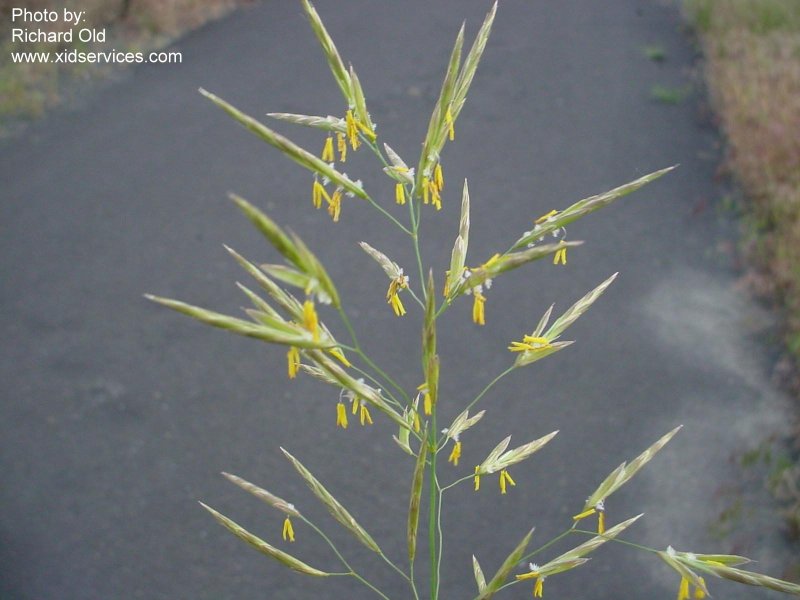Bromus inermis
Smooth Brome
Bromus inermis, var. inermis- Moss, Flora of Alberta – Widespread
- Global Invasive Species Database – No
- NatureServe Rank – Not yet assessed
- Haber, Upland – Moderate
- Haber, Wetland – No
- CWF, Status & Invasive Range – Moderate, BC, SK, AB, MB
- Alberta Revegetation Guidelines – Invasive agronomic: invasive in prairies (particularly northern fescue) and foothills
- The Nature Conservancy – Yes, w/ ESA
- CBCN – Low
- AB Weed – No
Smooth brome links:
[1] Link to Bugwood Invasipedia for extensive information on biology, ecology, and management of this species.
[2] Link to USDA Plants Database
Remarks
A robust cool-season grass that spreads vigorously by rhizomes. Seed spreads by wind. New patches are infrequent, but spread and form near-monocultural patches, eliminating most of the original vegetation once established. Easy to distinguish from the native ssp. pumpellianus. Limited mainly by moisture, so that it can take over the understory of Aspen woods or foothills Fescue prairie, but prospers only in snowdrift locations and along stream courses in drier prairie (Stipa-Bouteloua). Mature plants are unpalatable to cattle. Allelopathic. Not controlled by fire (but wiping with herbicide after a spring fire can help since it comes up before everything else).
As reported in "Promising Results with Brome Suppression" by Peggy Desserud in the Hard Grass Advocate VOLUME 2, ISSUE 1, PAGE 3, application of wheat straw rototilled into patches of Smooth Brome reduces growth of Brome (compared to similar patches without straw), higher concentrations of potassium (K) and ammonium (NH4), and higher soil moisture.
An anecdote at second hand: after a fire in a valley bottom (reasonably moist) site in the Calgary region, the land manager resolved to establish rough fescue as a replacement. An area of about an acre was staked, and a few weeks after the fire, when the new growth (all smooth brome) was up about 15 dm, the area was sprayed with glyphosate. The brome came up again, with less vigour, and was sprayed again. This was repeated until at the end of the first growing season, it had been eliminated. The next spring, the area was seeded with rough fescue using a minimal-disturbance seed drill, at a relatively high rate, half in one direction, the other half at right angles. The seed which germinated well and produced good cover. In the second and third years of growth, creeping thistle (sparse throughout), smooth brome (mostly at the margins, spreading vegetatively from surrounding areas), and leafy spurge appeared. Initially, these species were kept under control, but changing management priorities required this effort to be abandoned. More than 10 years after the fire, with no management of invasive species, the area reverted to 100% smooth brome, and became indistinguishable from surrounding untreated areas.



